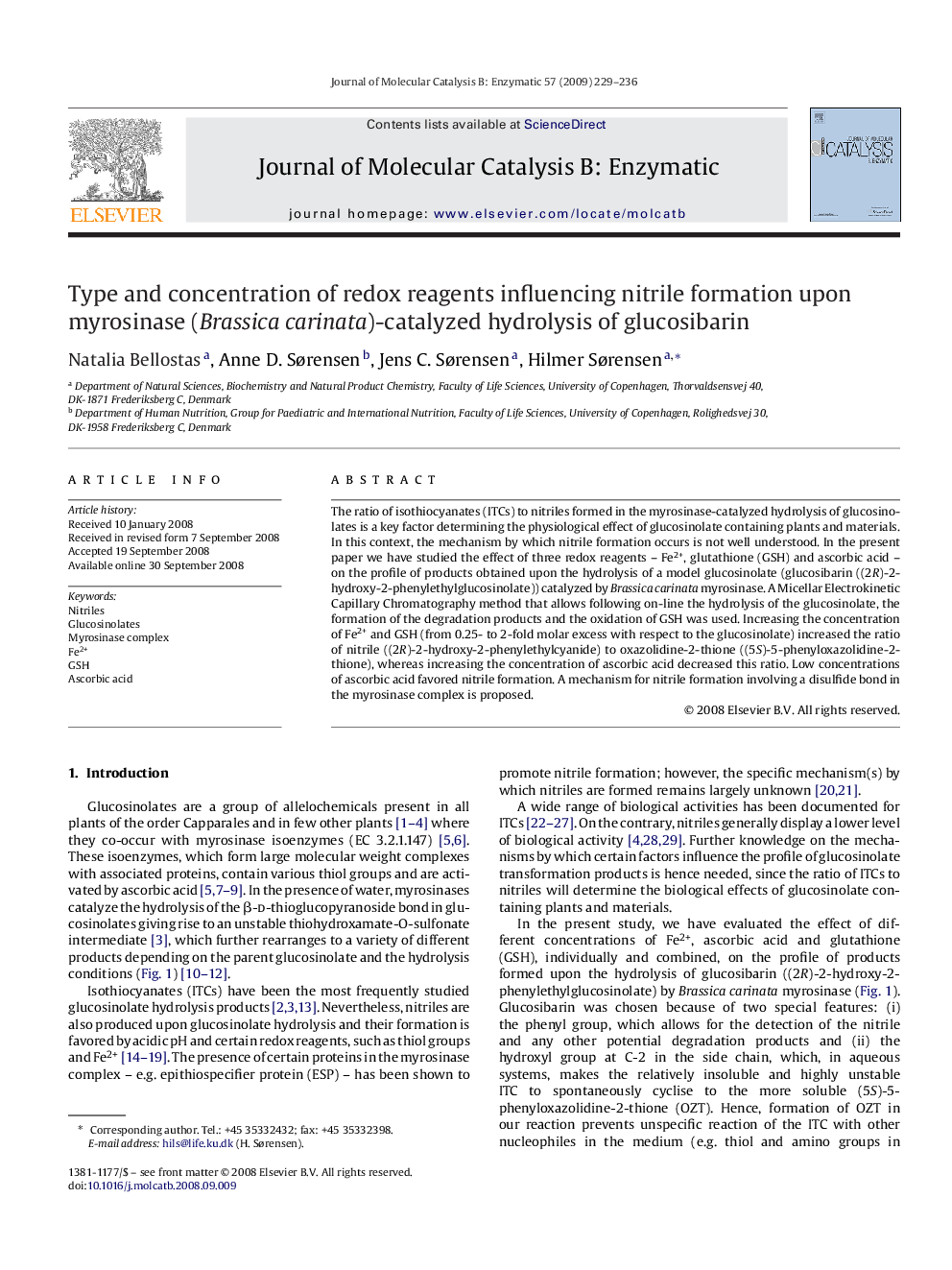| Article ID | Journal | Published Year | Pages | File Type |
|---|---|---|---|---|
| 70602 | Journal of Molecular Catalysis B: Enzymatic | 2009 | 8 Pages |
The ratio of isothiocyanates (ITCs) to nitriles formed in the myrosinase-catalyzed hydrolysis of glucosinolates is a key factor determining the physiological effect of glucosinolate containing plants and materials. In this context, the mechanism by which nitrile formation occurs is not well understood. In the present paper we have studied the effect of three redox reagents – Fe2+, glutathione (GSH) and ascorbic acid – on the profile of products obtained upon the hydrolysis of a model glucosinolate (glucosibarin ((2R)-2-hydroxy-2-phenylethylglucosinolate)) catalyzed by Brassica carinata myrosinase. A Micellar Electrokinetic Capillary Chromatography method that allows following on-line the hydrolysis of the glucosinolate, the formation of the degradation products and the oxidation of GSH was used. Increasing the concentration of Fe2+ and GSH (from 0.25- to 2-fold molar excess with respect to the glucosinolate) increased the ratio of nitrile ((2R)-2-hydroxy-2-phenylethylcyanide) to oxazolidine-2-thione ((5S)-5-phenyloxazolidine-2-thione), whereas increasing the concentration of ascorbic acid decreased this ratio. Low concentrations of ascorbic acid favored nitrile formation. A mechanism for nitrile formation involving a disulfide bond in the myrosinase complex is proposed.
